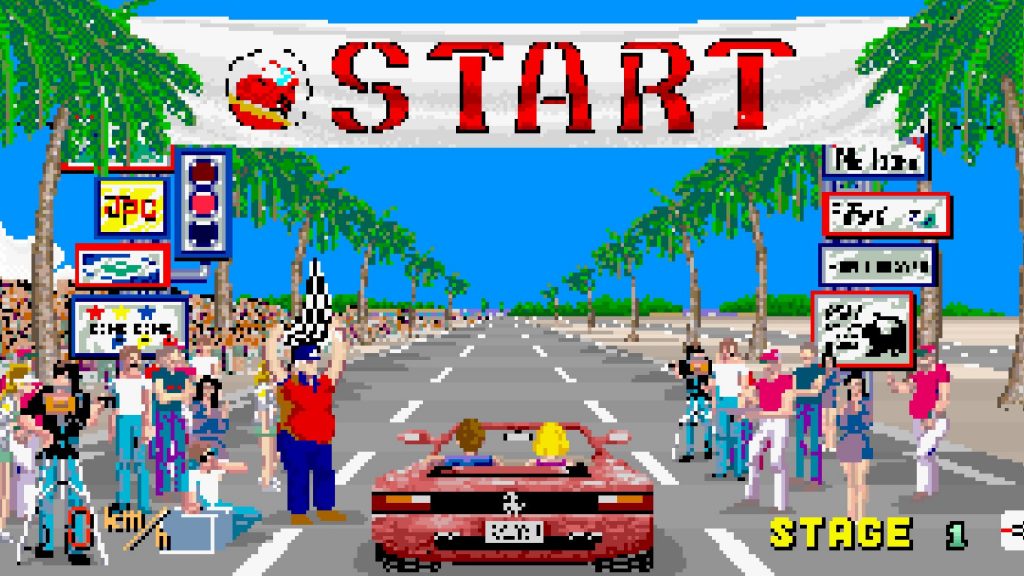On September 4, 1986, a new racing game appeared in Japanese arcades. On the side of the cabinet was a picture of a bright red Ferrari set against a blazing blue sky, and in shiny chrome lettering, two simple but evocative words: Out Run. I can only imagine how Japanese arcade goers felt when they saw this thing for the first time. That fire-red Testarossa drifting across the screen, palm trees swaying in the wind, with composer Hiroshi Kawaguchi's legendary Magical Sound Shower blasting from the speakers. It's no wonder the game was a smash hit for Sega: who could resist pumping a few yen into that?
Designed by Sega hitmaker Yu Suzuki, Out Run is a blisteringly fast 3D racing game where you drive that iconic red Ferrari at improbable speeds through a series of dazzlingly colourful environments. The clock is always ticking, and a gauntlet of dips, obstacles, and corners is waiting to eat into your time, making reaching the end anything but a passing breeze. (Joke for the fans there.) As you blaze through beaches, vineyards, and deserts, nailing those corners involves quickly switching gears and drifting around them with a satisfying tyre screech. If I had to sum classic Sega up in an image, it'd be an impossibly red Testarossa powersliding along a breezy, palm-lined beach. Now that's video games.
Related: 10 Modern Arcade Games You Never Heard Of
To prepare for the game's development, Suzuki went on a scouting trip to Europe, driving a BMW 520 through Monaco, Rome, Milan, Florence, the Swiss Alps, and the French Riviera. It was in Monaco where he first set eyes on a gleaming red Ferrari Testarossa, which inspired him to make it the star of his new driving game. On his return to Japan he arranged for photos to be taken of one from all angles, and recorded the sound of its engine. The game took ten months to develop, with Suzuki claiming he did most of the programming himself, working late nights to get the project done in time. Kawaguchi supplied a gloriously catchy, Latin-influenced soundtrack, and video game history was made.
As well as a traditional stand-up cabinet, Sega also released a deluxe sit-down version of Out Run with a built-in hydraulic motion simulator. This would rock and sway as you played, mirroring the movements of your car in-game. By late 1987, Sega had sold 20,000 Out Run cabinets worldwide, earning the company around $240 million. And it wasn't until 1993, with Virtua Fighter (another Suzuki game), that they'd break that record. Out Run was also ported to a ridiculous number of home systems including the Mega Drive, Commodore 64, PC Engine, Atari ST, and more recently, the Nintendo Switch.
A lot of arcade games from the '80s are, let's say, challenging to play today. But there's something timeless about Out Run that makes it, over three decades later, every bit as playable as it was back in '86. That indelible image of a Ferrari streaking across a sea of cerulean blue has lost none of its power, and the frantic time-based racing remains utterly thrilling. In 2003, Sega released OutRun 2 (not sure why they removed the space between out and run) and struck gold a second time, taking the essence of the first game and modernising it for a new era. Which makes me wonder if we'll ever see a third game. If not, well, the original is always there—and still holds its own on the track.
